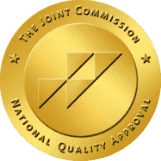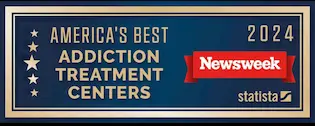TMS Therapy at Iris Healing®
- Home
- TMS Therapy at Iris Healing®
Our team of highly skilled professionals at Iris Healing® provide TMS therapy to patients in need.
Iris Healing®’s team of highly skilled professionals provides TMS therapy in Los Angeles to individuals in a safe and comfortable environment. Keep reading to learn more about how TMS therapy options at Iris Healing® can help.
What Is TMS Therapy?
TMS therapy is an effective way to treat a variety of health conditions.
TMS Therapy is an innovative, non-invasive, and drug-free solution for pain relief. It uses magnetic fields to stimulate nerve cells in the brain, which causes chemical changes and produces feelings of relief from symptoms such as anxiety, depression, or chronic pain.
Treatments with TMS have been proven effective for many types of mood disorders, including major depressive disorder (MDD), bipolar disorder, and postpartum depression. TMS therapy is commonly prescribed as an alternative treatment method when traditional treatments haven’t shown effectiveness.
What Does TMS Therapy Treat?
Drug and Alcohol Addiction
TMS therapy helps to stimulate parts of the brain responsible for regulating a person’s mood.
Since drug and alcohol abuse alters the way your brain functions, TMS therapy helps to restore optimal functioning in the brain.
In addition, since mental health disorders, like depression, anxiety, or bipolar disorder, commonly co-occur with addiction, TMS therapy provides relief from the symptoms causing addiction. In other words, by treating the underlying causes of addiction, TMS helps reduce cravings for drugs and alcohol.
Depression
A condition that causes individuals to feel persistent sadness or low feelings. Depression also comes with a loss of interests or activities and causes significant impairment in daily life.
Major depressive disorder (MDD) is a mental condition characterized by protracted periods of depression, a loss of energy and interest in life, as well as discomfort that has no obvious explanation. According to the National Institute of Mental Health (NIMH), “An estimated 21.0 million adults in the United States had at least one major depressive episode [in 2021].”
While some people are depressed nearly all of the time, others have episodes of depression that come and go, sometimes lasting years.
The conventional treatment for MDD is antidepressant medications and psychotherapy. However, some people have treatment-resistant depression (TRD). This means that conventional treatments aren’t effective at providing symptom relief. According to World Psychiatry, “It is currently estimated that at least 30% of persons with depression meet this definition.”
Magnetic therapy for depression, or transcranial magnetic stimulation, has been approved by the FDA (US Food and Drug Administration) for over a decade.
TMS therapy is rapidly gaining acceptance in medical circles as a safe and effective treatment for MDD. Magnetic therapy for depression effectively manages depression, including treatment-resistant depression cases.
Obsessive-Compulsive Disorder (OCD)
Obsessive-compulsive disorder (OCD) is a condition defined by excessive thoughts leading to compulsive behaviors. Individuals suffering from OCD often feel that they have no control over their unreasonable thoughts and fears.
According to The International OCD Foundation, “about 1 in 100 adults — or between 2 to 3 million adults in the United States — currently have OCD.”
OCD is a mental health condition characterized by a pattern of anxious thoughts and activities. OCD disrupts a person’s well-being by serving as a maladaptive defense mechanism. By focusing one’s attention on stress-inducing triggers, the illness aggravates common fears and concerns.
Transcranial magnetic stimulation (TMS) has shown potential in treating obsessive-compulsive disorder (OCD) symptoms. TMS therapy can safely and successfully relieve the symptoms of obsessive-compulsive disorder (OCD), especially for those who have not responded to typical OCD treatment choices.
People with OCD generally have increased activity between the prefrontal cortex and the striatum. Severe OCD symptoms are linked to this hyperconnectivity. TMS can reduce OCD symptoms by suppressing activity in this area of the brain.
Furthermore, in 2018, the FDA approved the marketing of TMS therapy for the treatment of OCD.
Anxiety Disorders
Anxiety disorders cause feelings of fear and dread, as well as physical distress, in response to certain situations. These symptoms can include increased heart rate, sweating, panic, and overwhelm.
Anxiety disorders and symptoms often co-occur with other mental and behavioral health disorders, like depression and addiction.
According to the World Health Organization (WHO), “Anxiety disorders are the world’s most common mental disorders, affecting 301 million people in 2019.”
Anxiety disorders are often associated with hyperactivity in the prefrontal cortex of the brain. According to Neuropsychopharmacology, “Disruption of specific nodes within the PFC [prefrontal cortex] that interface with inhibitory systems can affect the negative bias, failure to regulate autonomic arousal, and avoidance that characterize anxiety disorders.” TMS therapy for anxiety helps to reduce activity in the PFC.
Post-Traumatic Stress Disorder (PTSD)
TMS therapy is an excellent type of treatment for post-traumatic stress disorder (PTSD). According to a 2018 article by the US Department of Veterans Affairs (VA), “there is growing evidence that it can help Veterans with PTSD.”
While TMS therapy may not eliminate PTSD, it can help reduce symptoms and make them more manageable.
According to the Journal of Affective Disorders, “The addition of rTMS [repetitive TMS] to CPT [cognitive processing therapy] . . . produced significantly greater PTSD symptom reduction early in treatment and was sustained up to six months post-treatment.”
Chronic Pain
Chronic pain is a disabling condition in which a person has physical pain for an extended period. In general, chronic pain is defined as persistent discomfort that lasts longer than three months. Chronic pain can often appear with no obvious cause.
For example, chronic pain sometimes develops from an acute injury that destroys the nerves in the area. This results in pain that lasts far longer than the normal healing time. However, it is impossible to pinpoint the source of the discomfort in other cases.
Transcranial magnetic stimulation is sometimes utilized to treat and manage chronic pain—especially when other treatment options have failed.
According to the Neurosurgery Clinics of North America, “Current data suggest that transcranial magnetic stimulation (TMS) has the potential to be an effective and complimentary treatment modality for patients with chronic neuropathic pain syndromes.”
However, it is important to note that despite very promising results obtained from the research, TMS for chronic pain is considered an off-label treatment as the FDA has not approved it as a treatment option for chronic pain.
Asperger’s Syndrome
Asperger’s syndrome, now considered part of the autism spectrum disorder continuum, is less debilitating than other types of autism.
Still, Asperger’s syndrome can cause significant impairments in a person’s ability to function in everyday life.
TMS therapy can stimulate parts of the brain that are inactive in those with Asperger’s syndrome. This can reduce the severity of symptoms with little to no side effects.
Autism
Autism, often known as autism spectrum disorder (ASD), is a complex illness characterized by communication and behavioral issues. ASD can manifest itself in a wide range of symptoms and abilities.
TMS is beneficial in reducing the symptoms of autism in ways that other therapies have failed to achieve.
TMS is, however, not yet available as a popular treatment option for ASD. This is because more research needs to be conducted to evaluate the potential of TMS in the treatment and management of ASD.
Schizophrenia
Schizophrenia is a disorder that affects a person’s ability to think, feel, and behave clearly.
Schizophrenia is a severe psychological disorder in which patients have aberrant perceptions of reality. It can include hallucinations, delusions, and profoundly abnormal thoughts and behaviors, making it difficult to function daily.
Most people with schizophrenia usually experience symptoms not alleviated by antipsychotic medications. TMS has been offered as a novel therapeutic option for schizophrenia, particularly for those who suffer from chronic auditory hallucinations.
Parkinson's Disease
Parkinson’s disease is a mobility disease occurring due to damage to the nervous system. Symptoms appear gradually, often beginning with a barely detectable tremor in only one hand. However, these tremors are often accompanied by stiffness and reduced mobility.
Low-frequency repeated TMS over the supplementary motor area (SMA) may help to improve motor symptoms in Parkinson’s disease efficiently.
The connections between areas of the brain implicated in gait freezing may also become normalized after TMS treatment.
Tinnitus
Tinnitus, or a chronic ringing in the ears, can impact your overall quality of life.
TMS therapy can help to alleviate symptoms of tinnitus.
It can also help with other conditions commonly associated with tinnitus, such as insomnia, anxiety, and depression.
What Are the Side Effects of TMS?
There are little to no side effects of TMS therapy.
For this reason, TMS therapy is getting a lot of attention as a complementary treatment for several mental and physical conditions. Still, some clients experience temporary discomfort following TMS sessions.
What Is TMS Therapy Discomfort?
What Are Additional Side Effects?
The following are the most common side effects of TMS therapy:
- Feeling lightheaded
- Headache
- Scalp discomfort
- Spasms or twitching of facial muscles
- Tingling
Most of these side effects are mild and go away within a short period of time.
However, there is a risk of some rare and serious side effects, such as seizures and a worsening of symptoms.
Generally speaking, the risk of severe side effects is rare and is likely due to an underlying condition. Like any type of treatment, it’s important to weigh the potential risks and benefits.
What Is The Success Rate of TMS Therapy?
Most TMS providers have a success rate of 70% to 80%.
However, the effects of TMS therapy don’t occur overnight. It will take about 4 weeks of treatment to notice any significant changes.
How Many TMS Treatments Are Needed?
TMS usually consists of 30 sessions, broken down into five sessions per week for six weeks.
However, a second course of sessions can be added for those who don’t see significant results after the initial treatment course. Like other types of treatment, TMS therapy varies from person to person. As a result, some people need more sessions than others.
The following factors determine the frequency of TMS treatment sessions:
- Severity of symptoms
- Medication history
- The current course of treatment
- Diagnosis and diagnostic history
How Long Do The Effects of TMS Therapy Last?
The effects of TMS therapy typically last 6 months to one year or more.
However, results vary from person to person. This is because each person’s condition, severity, and brain functioning are different. For instance, the amount of time you feel relief from symptoms can depend upon your age, history of treatment effectiveness, presenting conditions, and severity of your symptoms.
In addition, it’s important to note that TMS therapy is not a permanent cure for your presenting disorder. Health conditions like Parkinson’s and chronic pain are never cured. Instead, your symptoms will reduce in severity with continuing treatment.
Similarly, mental health disorders, like addiction, depression, anxiety, PTSD, and OCD are chronic, relapsing disorders. This means that you need to continue treatment in order to manage your symptoms for the long term. Likewise, neurological disorders like autism and Asperger’s require continuing treatment for symptoms.
Begin TMS Therapy Today
Iris Healing® in the Los Angeles area offers TMS therapy for a variety of mental and physical health conditions. If you’ve tried everything else—psychotherapy, medications, and other conventional treatments—without any results, TMS could provide relief for your symptoms.
Contact us today to begin TMS therapy.
More on TMS Therapy
There are several FDA-approved TMS devices. Each TMS machine works the same but has a different look and may be more effective at treating different disorders. Below, we have a look at several different TMS devices and how they are typically used.
Apollo
One of the most eye-catching TMS devices is the Apollo. It has a bright blue modern color and modern design that is meant to seat patients comfortably. There is full neck and head support and an easy-to-operate computer attached to it that makes it easy for both the technician and the patient.
Many offices are turning to the Apollo TMS device, as it has a great warranty, it’s easy to use, and it looks super sharp.
CloudTMS
One of the most lightweight TMS devices is the CloudTMS. It’s 100% portable and works with the help of a laptop computer. It’s been a tried and tested TMS for addiction and shown to be highly effective against the symptoms of depression.
The CloudTMS is available in the US and across the globe, making a name for itself after several reports of successful treatments.
Nexstim
Nexstim is among one of the most compact designs offered for TMS treatment. Said to help with depression, anxiety, and even brain surgery, this little device has proved effective and is moveable around the head to target certain areas.
The part of the device that rests on the forehead is small, light, and does not create any pressure on the patient’s head. These features make it very desirable.
Magstim
Magstim is another brand that comes with a comfortable chair, one that has neck and head support to keep patients comfortable. There is added cooling for a soothing effect. Additionally, the system has proved to be effective in treating the symptoms of anxiety and depression.
The chair is designed for patients to come in and sit back while they get their treatment. All parts of it are fully adjustable so that each patient can find their most comfortable setting.
BrainsWay Deep
BrainsWay Deep is a non-invasive TMS device that’s proven effective in reducing the symptoms of anxiety and depression. It is created with a design that sits on top of the patient’s head, delivering electromagnetic pulses.
This device is extremely effective for those who have tried other treatments and failed, as this device is designed to penetrate deep.
NeuroStar
NeuroStar TMS is an express TMS Treatment that patients can come in and do at their convenience. Said to target the part of the nervous system responsible for depression and anxiety, this treatment is not only FDA-approved but is also covered by most insurance plans.
MagVenture
Most TMS devices have an attached coil but, the MagVenture comes with a comfortable cap that fits right over the patient’s head. The company has been involved in lots of research, where they have been deemed both effective and safe.
Before you go in for TMS therapy, there are several things that you will need to do. Take a look at the checklist below before heading in for your first appointment:
Physical Exam
Just like with any other therapy, you will need to undergo a physical exam before having TMS therapy. TMS therapy requires that you sit in a single position for a slightly extended period (up to an hour). You’ll need to be able to do this for each appointment.
Psychiatric Evaluation
As TMS is used for mental illness treatment, you will need to discuss your psychiatric state with your treatment provider. You’ll be asked several questions by your doctor to help determine the severity of your mental illness, as well as the impact that it is having on your daily life.
You will also need to be prepared to discuss the failure of prior therapies, like medication, or other brain stimulation therapies.
Preparation Before Your First Appointment
If you are getting ready for your first appointment, there are a few things you can do to prepare. First, come up with any questions you may have about the process and the therapy. Be ready to ask your doctor any and all questions you may have.
Next, be sure to reach out to your support system for help. TMS is not an invasive procedure, and most patients see few, if any, side effects. Still, it is a new process, so you should be prepared to reach out for support then need be.
Finally, bring a bottle of water and general headache medicine to your first appointment, just in case you do feel the side effects. Do not worry, they go away quickly.
TMS therapy is non-invasive, and it is unlike many other brain stimulation therapies. When you go into your therapy, you can expect to sit in a comfortable chair for up to an hour. Some doctors will encourage you to bring headphones, or even a blanket, for an added layer of comfort.
When considering the expectations surrounding results, it’s going to differ from patient to patient. Some see results in as little as two weeks. However, most see results in four to five weeks, with increasing effect as the therapy continues.
Your insurance provider can help to cover the costs of TMS therapy. Contact Iris Healing today to verify your coverage. However, if you don’t meet all the requirements for overage, the total cost is around $3000.
Iris Healing® strives to be diligent and prompt in updating the information available on our website. Please note, however, that our treatment modalities and protocols are subject to change at any time. For the most up-to-date details regarding our treatment offerings or other protocols, please contact us: (844) 663-4747.





